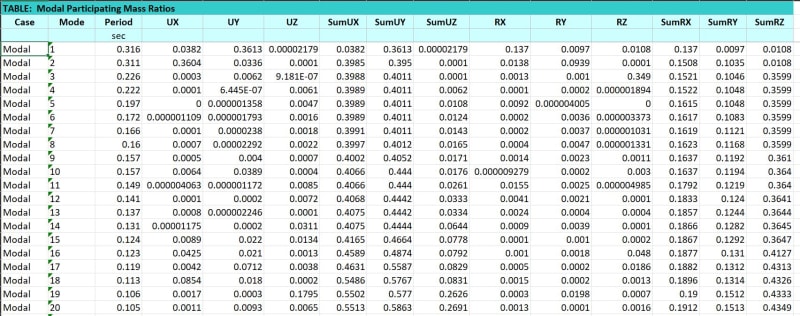Dear everyone,
I am modelling a five storied building with one basement. The basement walls are modelled at basement. The building also has vault rooms in the Ground Floor and the First Floor. So, I have to model the shear walls in Ground Floor and First Floor. I am getting low modal mass participation ratio. In 1st mode, the model mass participation ratio is 3.82% along X direction and 36.13% along Y direction. In 2nd mode, it is 36.04% along X direction and 3.36% along Y direction. The sum of mass participation up to three modes are 39.88% along X direction and 40.11% along Y direction. What should be done to increase mass participation?
I am modelling a five storied building with one basement. The basement walls are modelled at basement. The building also has vault rooms in the Ground Floor and the First Floor. So, I have to model the shear walls in Ground Floor and First Floor. I am getting low modal mass participation ratio. In 1st mode, the model mass participation ratio is 3.82% along X direction and 36.13% along Y direction. In 2nd mode, it is 36.04% along X direction and 3.36% along Y direction. The sum of mass participation up to three modes are 39.88% along X direction and 40.11% along Y direction. What should be done to increase mass participation?


